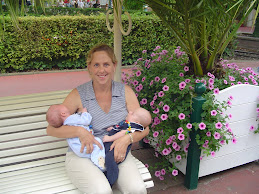Friday, August 31, 2012
Dr. Mom
So I started my continuing veterinary education the other day.
Thirty true-false questions based on six articles from the August edition of the Australian Veterinary Journal.
The baby was asleep and I was eager to prove myself so I actually did okay on the first, Effect of diet on serum 25-hydroxyvitamin D concentration on the short-beaked echidan (Tachyglossus aculeatus). Feed those echidnas a proper diet, please, problem solved, thanks for sharing.
Although I did understand and appreciate the second, Comparative approach to understanding traumatic brain injury in the immature, postnatal brain of domestic animals, I admit to wanting to shake the baby when he woke up too early from his nap for me to finish all six articles.
It went downhill from there.
I was genuinely interested in Kunjin flaviviral encephalomyelitis in an Arabian gelding in New South Wales, Australia and it did remind me about arboviruses and encephalitises (I just like the way that sounds! Maybe I DO have the making of a poet! But oh hey, I digress from the medicine. Again.) Ross River Fever in Queensland and my daughter rides horses. Mosquito vectors. Get out the bug spray for summer. Zoonotic diseases. My favourite.
But then a rapid descent (hurry, the baby is stirring!) into Effects of intra-articular sodium pentosan polysulfate and glucosamine on the cytology, total protein concentration and viscosity of synovial fluid in horses. Am I only reading these things to remind myself that I can understand big words?!
On to Resolution of life-threatening dysphagia caused by caudal occipital malformation sydrome following foramen magnum decompression surgery. Really?! When I could be typing up my Haiti story to send out to an Adventure Story Competition at the end of September?
Flow cytometric detection of alpha -1-glycoprotein on feline circulating leucocytes made the vomiting Cavalier Prince Charles Spaniel seem suddenly way more interesting. Even with a crying baby on my hip by this time I felt bad for the authors, living in a publish or perish academia, who obviously wanted to come up with a definitive test for FIP and, coming up with nothing conclusive instead, still felt the need to tell us about it, in exhausting detail (honestly, I wouldn't have wanted to pay more attention to it even if the baby hadn't woken up in the middle of it!), 6 pages, with 6 charts and 32 references.
Let me know when you DO come up with something I can use in the clinic, will ya?
Until then, you got yours. I didn't pass your section of the test.
All that reading and testing counts for quite a few continuing ed points so I wanted to be sure I did actually learn something.
Mental self-test:
1. Hypervitaminosis D is bad. Not just in echidnas.
2. Primary brain injury is when you hit your head against a post. Secondary brain injury is the swelling that follows. (Note to self: ask veterinary friends, a bit sheepishly, do we still not just treat that with steroids?! oooh oooh ooh - recalling something about Furosemide - maybe having kids hasn't totally destroyed all of my brain cells?! Come to think of it, does having kids count as the primary brain injury or do the years that follow count as secondary brain injury? Or does one need to have primary brain injury to even have kids?)
3. Remind daughter to stay away from horses with neurologic signs. (Hmm. Zoonotic diseases are so cool. Should I go back to uni?!)
4. Stay away from racehorses.
5. Remember to send out Haiti piece to writing competition. Really, I just couldn't find anything interesting about that King Charles Spaniel. Must be my fault. My baby is way cuter.
6. Good Lord, SOMEBODY just come up with a test for FIP. Better yet, tell creepy next-door neighbours with passel of cats to keep the little shit-makers indoors. (Oh dear, did I just say that, there will be hell to pay!)
1/20th of my yearly continuing education requirement down. I feel responsible. I feel smart.
I feel like maybe I should be writing a monthly comedy article for a veterinary journal.
Subscribe to:
Post Comments (Atom)






No comments:
Post a Comment